Recently I wandered through an amazing wild-flower meadow in Sussex, a vast and glorious array of colour and celebration. I find it hard to grasp why flowers are quite so beautiful. The naturalists’ answer is that it’s so that the bees choose them to land on rather than their neighbours. Crinkled purple vetch competing with the splash of red poppies, competing with homely, wisely-winking daisies. ‘Land on me’. ‘No, land on me’. ‘Oh, please, land on ME’. But wouldn’t the bees still find them if they were all just shades of dull brown? Is it really necessary, for survival, for them to be quite so glorious? I love the sheer unnecessary beauty of them, which seems to exist for no other reason than that it does.
Here’s a piece I made a long time ago now, based on grasses blowing in the wind. It’s from later in the summer, when the wild-flowers have faded and the grasses are turning gold. It’s machine-embroidered, with layers of bonded ‘snippets’ as a background, and dyed orange and green velvet cut-away as a top layer to make the grasses. The thumbnails below are the pencil and pen-and-ink drawings that started this piece off.
Flowers can be held up as shields against sad, bad things. They help us to celebrate, to grieve and to rejoice. The recent winner of the City and Guilds Medal for Excellence and Lion Award for Floristry, Jill Harden, said to me ‘I can’t imagine a life without flowers’. I guess that’s why artists paint them, poets write about them, and we textile artists stitch them.
I came across the work of Lara Sparks recently at a Sussex Guild of Craftsmen show. She kindly let me photograph her work and put a few pieces here. Some of her work features images of wildflowers and grasses, delicately stitched on a backgound of linen. She was also featured in a 6-page article in Embroidery Magazine. Her website is at http://www.larasparks-embroidery.co.uk/
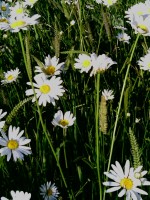 We were introduced to this wild-flower meadow by our friend V and her husband. I was thinking of V as I wandered through it recently, without her company this year as she was away saying her final farewells to her mother. V is a real celebrant of the wonders of nature, discovering it each day as it if is all new again since yesterday. Which, of course, it is.
We were introduced to this wild-flower meadow by our friend V and her husband. I was thinking of V as I wandered through it recently, without her company this year as she was away saying her final farewells to her mother. V is a real celebrant of the wonders of nature, discovering it each day as it if is all new again since yesterday. Which, of course, it is.
W Keble-Martin’s ‘The Concise British Flora in Colour’ stood in the same place on the family bookshelf in Dartmoor for fifty years, consulted earnestly as a family Bible. Keble-Martin is probably quite bewildered now to find himself on my bookshelf by a shingle beach in Sussex. Open it randomly now and old flowers drop out, dusty and brittle from fifty years pressed between the pages. There is still a hint of their true colours when they grew in the fields, river-banks, meadows and moorlands of Devon, picked and studied when the sun shone every day and everything was ever, and pressed between the pages as talismans. 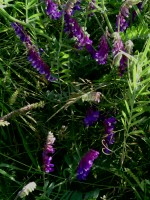 The pages have pencilled notes of where and when each flower was found; the one and only exception to the crime of writing in a book. ‘Lady’s Pennywort, Aish Lane, 1968’. ‘Heath Pearlwort, Skerraton Down, July 1970’. ‘Sea Purslove, Aveton Gifford, April 1972’. Many are from ‘The Meadow’ behind the house. For there is, actually, only one meadow in this universe; the one from which the house, Meadow Cottage, takes its’ name. Fistfuls of wild-flowers were brought home home as presents, drooping from being clutched in small, hot hands. And if a particular treasure was found by a child, then our name was entered carefully in the book along with the flower, place and date. My mother’s hand-writing is on the page, as if she will come back one day with a new flower to identity. I can’t remember why I was so obstinate about learning their names, but how glad I am that they slipped into my mind anyway, and can be recited as a litany as I walk. Moon-daisy, cow-slip, vetch. Rose-bay Willow-herb, Bindweed, Sedge. Red Campion, fox-glove, Ling. And valiant Cow-parsley, towering over all the others to declare that it is here anyway, whether we are here to see it or not.
The pages have pencilled notes of where and when each flower was found; the one and only exception to the crime of writing in a book. ‘Lady’s Pennywort, Aish Lane, 1968’. ‘Heath Pearlwort, Skerraton Down, July 1970’. ‘Sea Purslove, Aveton Gifford, April 1972’. Many are from ‘The Meadow’ behind the house. For there is, actually, only one meadow in this universe; the one from which the house, Meadow Cottage, takes its’ name. Fistfuls of wild-flowers were brought home home as presents, drooping from being clutched in small, hot hands. And if a particular treasure was found by a child, then our name was entered carefully in the book along with the flower, place and date. My mother’s hand-writing is on the page, as if she will come back one day with a new flower to identity. I can’t remember why I was so obstinate about learning their names, but how glad I am that they slipped into my mind anyway, and can be recited as a litany as I walk. Moon-daisy, cow-slip, vetch. Rose-bay Willow-herb, Bindweed, Sedge. Red Campion, fox-glove, Ling. And valiant Cow-parsley, towering over all the others to declare that it is here anyway, whether we are here to see it or not.
This Heritage
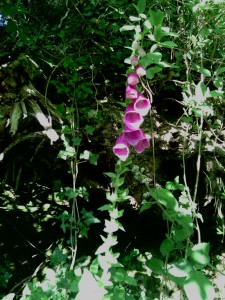 They are not dead, who leave us this great heritage of remembered joy. They still live in our hearts, in the happiness we knew, in the dreams we shared. They still breathe, in the lingering fragrance windblown from their favourite flowers. They still smile in the moonlight’s silver and laugh in the sunlight’s sparkling gold. They still speak in the echoes of words we’ve heard them say again and again. They still move, in the rhythm of waving grasses, in the dance of the leafy branches. They are not dead; their memory is warm in our hearts, comfort in our sorrow. They are not apart from us, but a part of us, for love is eternal and those we love shall be with us throughout all eternity.
They are not dead, who leave us this great heritage of remembered joy. They still live in our hearts, in the happiness we knew, in the dreams we shared. They still breathe, in the lingering fragrance windblown from their favourite flowers. They still smile in the moonlight’s silver and laugh in the sunlight’s sparkling gold. They still speak in the echoes of words we’ve heard them say again and again. They still move, in the rhythm of waving grasses, in the dance of the leafy branches. They are not dead; their memory is warm in our hearts, comfort in our sorrow. They are not apart from us, but a part of us, for love is eternal and those we love shall be with us throughout all eternity.
(Author Unknown)










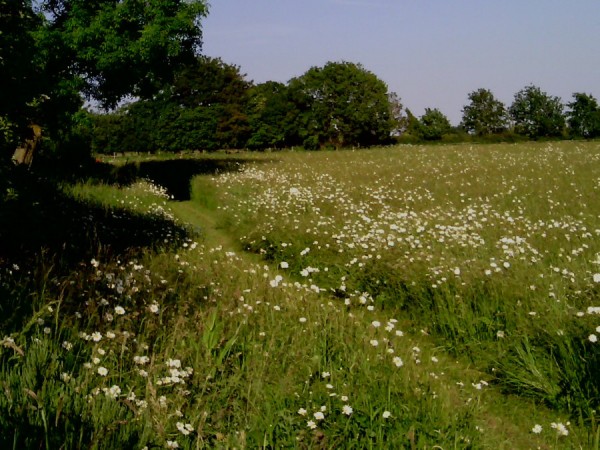
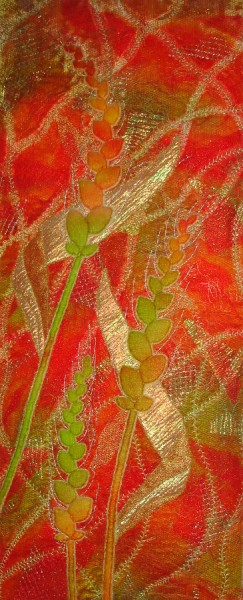
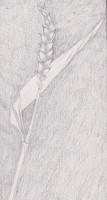
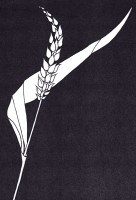
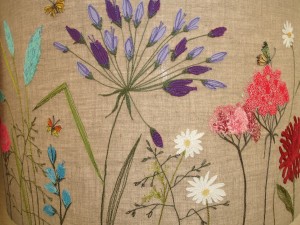
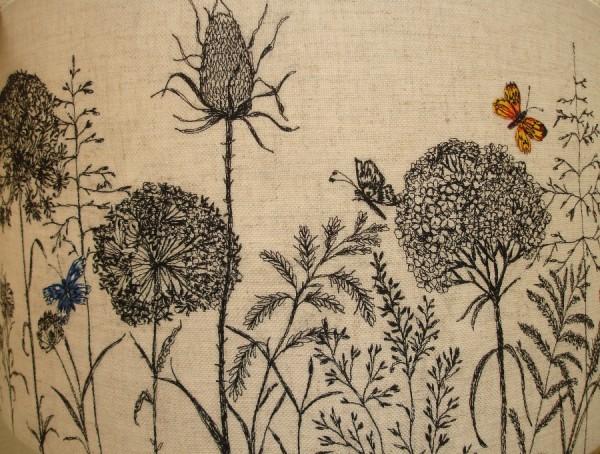
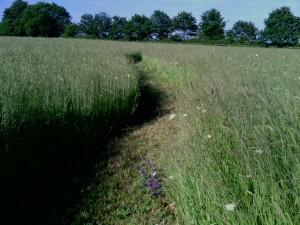
It’s lovely reading back in time of the loving memory of my dear mum who was so very fond of the wild flowers in Switzerland and the Europe of her youth. It’s a crying shame we have lost 97% of our British wild flower meadows in Mum’s lifetime. Great admiration for owners of this land bringing back the joys of a WFM, with all its beauty and colour and scent and bussling invertebrate activity so necessary for our planet’s health. “V”
97% ??? I didn’t realise so many had gone – that’s staggering. All the more reason to enjoy and celebrate them, and protect them.
The naturalust in me says flowers evolved targets for bees to home in on but they see a different light spectrum to us. They dont see colours as we do. The colours are indeed there as an emergent property and yes you are right, colours exist just because they do! And we get the benefit! Tony
I wonder how people can tell how bees see colour? How interesting.